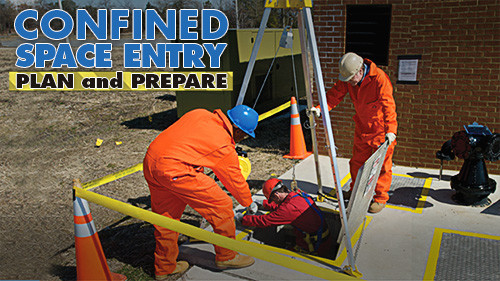
Confined Space Entry: Plan And Prepare
Beginning with dramatic, real-life stories of tragic confined space incidents, Confined Space Entry: Plan and Prepare shows your employees why it is vital to follow procedure when working in a confined space.
Every year needless injuries and fatalities occur in confined spaces and often, these spaces seem safe or even harmless. But looks can be deceiving - help your employees understand what a confined space is, the hazards that are associated with it and the steps to follow to maintain a safe work environment.
Identifying Confined Spaces:
OSHA defines a confined space as any space that:
- Is large enough for a person to enter and perform work in
- Has a limited opening for entry and exit
- Isn't intended for continuous human occupancy.
Identifying Hazards:
Different confined spaces contain different kinds of hazards and dangers which may include hazardous atmospheres, engulfment, falls, electricity and machinery, and other risks such as heat, cold, vibration, fatigue and noise.
Confined Space Entry Permit:
This permit is an OSHA-required document that must be clearly posted at the entrance of the confined space and is executed by a properly trained Entry Supervisor or Safety Representative. It serves as a "game plan" for any entry and work to be done in a confined space. It ensures that every confined space entry operation is thoroughly planned out before even beginning, and that every safety precaution is taken once the operation is underway.
Product Details
| SKU | CSE013 |
| Formats | |
| Language(s) | |
| Video Length |
 Loading... Please wait...
Loading... Please wait...








